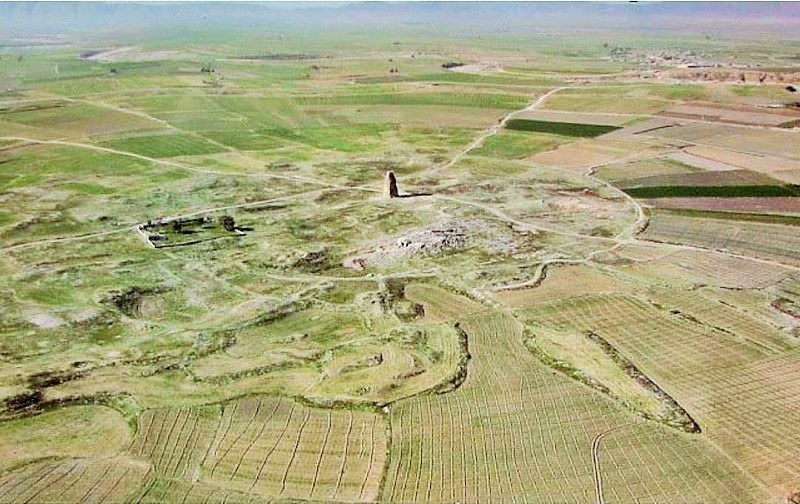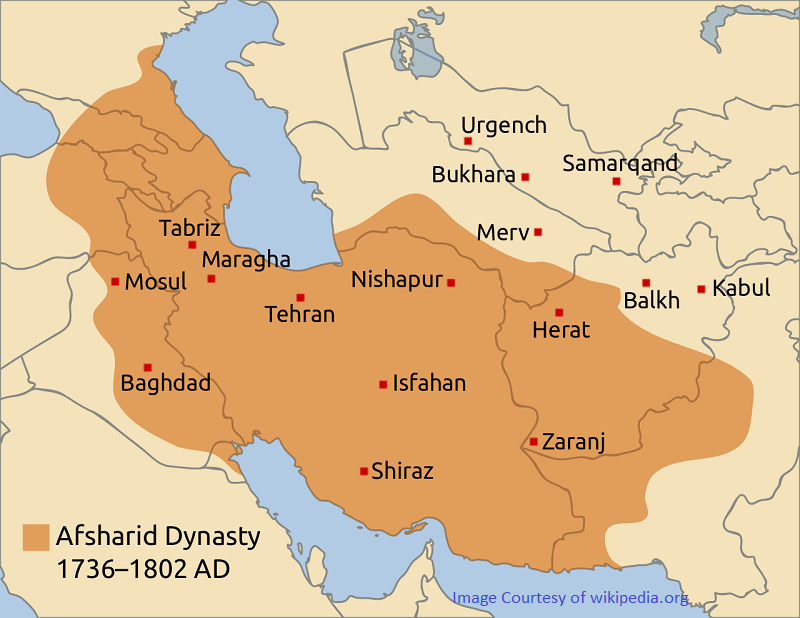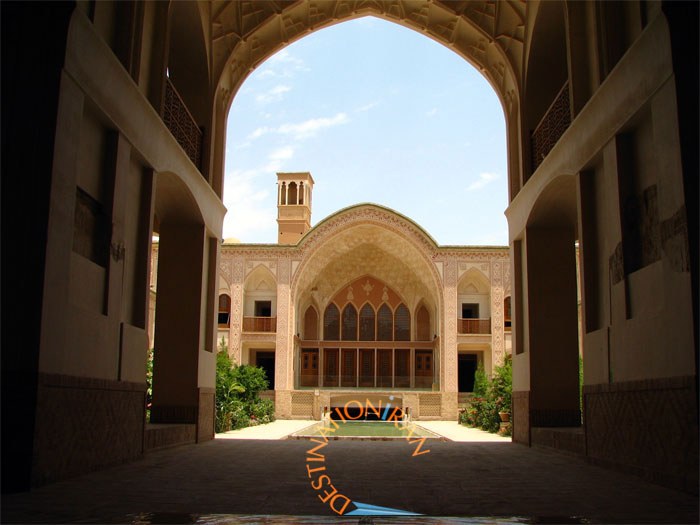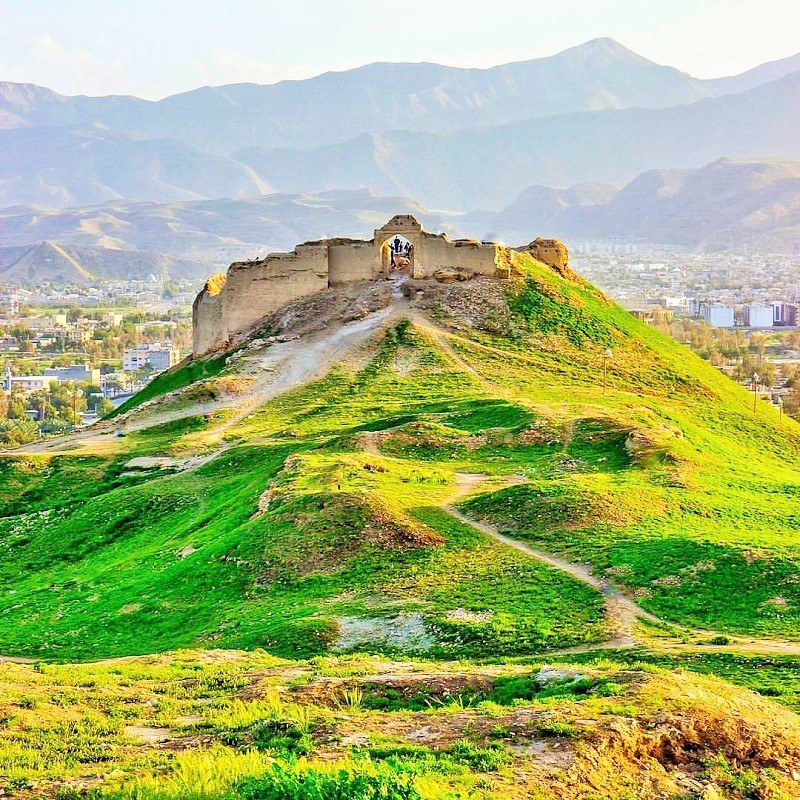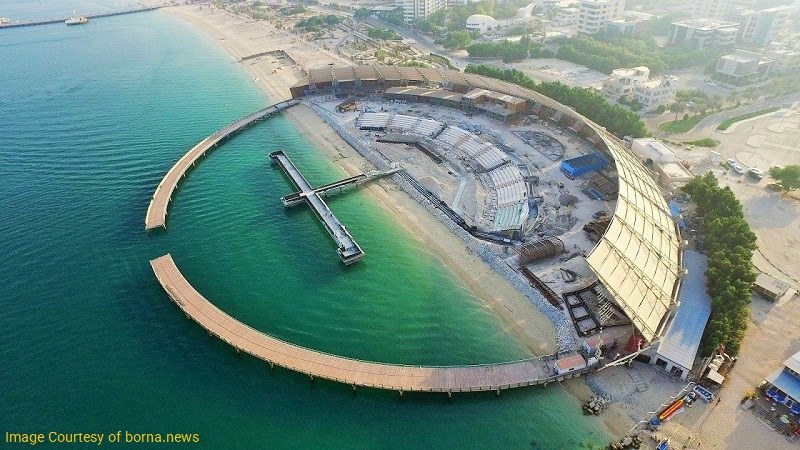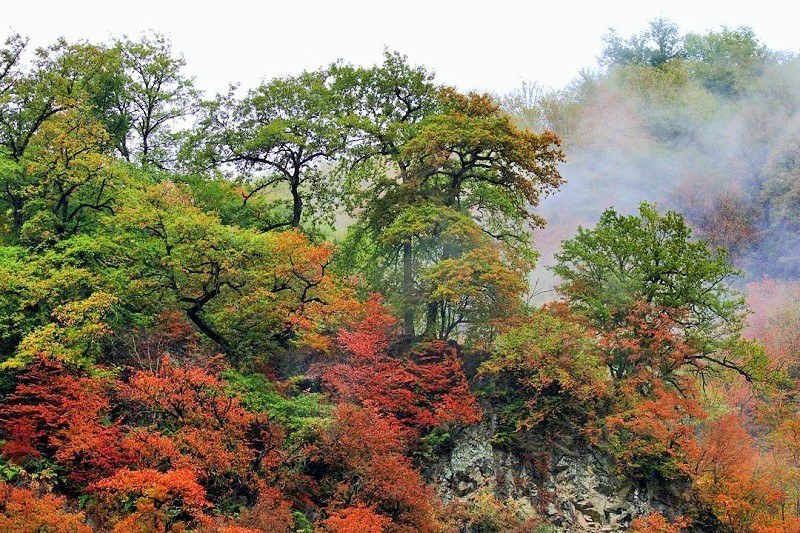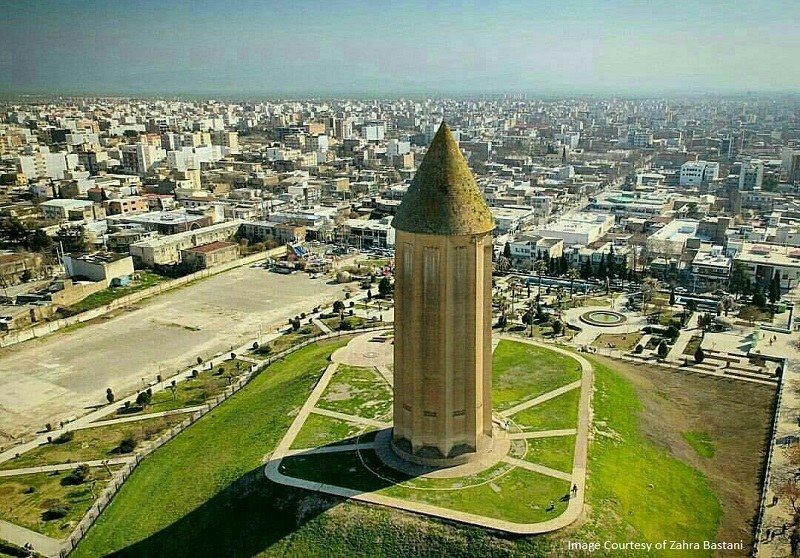
If you are heading for Gonbad-e Kavus tourist attractions, there’s good news for you. This city has got a lot to offer in its nature and historical spots.
Gonbad-e Kavus, or Gonbad-e Qaboos, is a city with beautiful nature and fantastic historical attractions in northern Iran. It has the tallest brick-made tower in the world. The cemetery and shrine of Khalid Nabi, Imamzadeh Yahya bin Zayd, Gonbad-e Kavus artificial lake, Russian Great Bazaar, Equestrian Complex, Golestan Dam, Hivehchi-ye Bala Village, Alma Gol, Aji Gol, and Ala Gol wetlands are some of the tourist attractions of Gonbad-e Kavus.
Geography of the City of Gonbad-e Kavus
Gonbad-e Kavus is one of the cities of Golestan Province, located 3 km from the ancient city of Gorgan. Turkmenistan country from the north, Shahrud city from the south, Minoodasht town from the east, Bandar Torkaman from the northwest, and Gorgan and Aliabad from the west are the neighboring areas of Gonbad-e Kavus.
The city has moderate and humid climates and annual rainfall is about 500 millimeters. The average annual temperature is 18.6 ° C. The height of this city is 52 meters above sea level.
There are different ways to travel to Gonbad-e Kavus:
- By car
Traveling by car from Tehran to Gonbad-e Kavus has two ways: one of them is 508 km and another is 555 km, which is a bit longer:
- The first road, a bit shorter, is from Tehran to the northeast and the cities of Damavand, Qaemshahr, Firoozkooh, Gorgan, Aliabad-e Katoul and then Gonbad-e Kavus. The route is very lush and beautiful.
- The second road is from east of Tehran and it is through the cities of Varamin, Damghan, Shahrud and then Gonbad-e Kavus. This road has fewer cities and takes half an hour more than the first one.
- By bus
Buses from the Beyhaqi bus terminal and the terminal of the east of Tehran leave to the Gonbad-e Kavus every day. Traveling by bus takes about 7-8 hours.
- By plane
There is no airport in Gonbad-e Kavus. For traveling by plane, we can leave for Gorgan airport and then, take a taxi to reach Gonbad-e Kavus city. The journey from Gorgan to Gonbad-e Kavus is not long and tedious, and it takes 1 hour and 30 minutes.
Traveling to Gorgan by plane from Mehrabad airport in Tehran takes 50 minutes.
Gorgan Airport has also flights to Kish and Mashhad cities.
- By train
The city of Gonbad-e Kavus does not have a train station, and if you want to travel by train, you should go to Gorgan. The journey from Tehran to Gorgan by train takes about 11 hours and passes through beautiful countryside.
Population and Economy of Gonbad-e Kavus City
According to the 2016 statistics of the Iranian Organization of Population and Housing, the population of this city is 151, 910 people. Different ethnic groups like Turkmens, Mazandaranis, Azeris, Khorasanis, Semnanis, Baluchestanis, Kazakhs and Sistanis live in this city.
Gonbad-e Kavus has fertile soil. The rivers and wells provide the required water for agriculture. Wheat, barley, rice, and citrus are the agricultural products of Gonbad-e Kavus. There are many olive gardens in this city. Gonbad-e Kavus is a main exporter of cereals to Tehran and other large cities. The economic base of the city is agriculture. Animal husbandry and related industries are also common there.
Among the handicrafts of the city, we can mention the carpets, rugs, and Qarchins (a sort of carpet). The Turkmen high-quality red rugs, the symbol of the stability of local people, are especially famous. Horse breeding is common in the region, and the Turkmen horses are famous worldwide. In addition, the flour, oil, cotton ginning, canning, compote, and chipboard factories are active in this city.
History of Gonbad-e Kavus
Archaeological excavations have estimated the region’s civilization to be approximately 5000 to 6000 years. This ancient city has a history full of ups-and-downs. With the advent of Islam and in its early centuries, Gonbad-e Kavus had a remarkable role in the flourishing of Islamic culture.
Onsor Al-Ma’ali Keikavus, one of the last emirs of the Ziyarid dynasty and the author of the great book of “Qabus nameh“, and Abd al-Qahir al-Jurjani, the author of precious books about grammar and meanings science of Arabic, played significant roles in the development of Persian and Arabic literature. In addition, the scholars estimate that Qabus Nameh is a collection of pre-Mongolian Islamic civilizations.
In medicine, the area has also been a major city for the Islamic world. Abu Sahl al-Masihi and Sayyed Isma‘il (Hakim) Jorjani, the author of “Zakhireye Khwarazmshahi“, are the two physicians of Gonbad-e Kavus who are famous in Iran and the world. Being one of the most important states of Iran throughout history, Gonbad-e Kavus joined to Mazandaran in 1938.
In ancient times, there was a city called Hyrcania and then renamed to Gorgan or Jorjan. It was located in the current city of Gonbad-e-Kavus and on the Silk Road. Therefore, it was of great trade value. During the reign of Reza Shah Pahlavi, a new city named Gonbad-e Kavus was built with modern urban planning rules near the ruins of Ancient Gorgan. For a long time, during the reign of the Ziyarid dynasty, the city was the capital of Iran.
Sheikh Fakhredin Asad Gorgani, the poet of Vis and Ramin, and Avicenna, an Iranian skilled scholar, philosopher, and physician, are among the scholars lived in Gonbad-e Kavus.
An earthquake destroyed the city of Gonbad-e Qavus about 100 years ago. After that, people helped to rebuild the city. Therefore, the remains of the old city remained in the eastern part of the current city.
During the Pahlavi dynasty, Reza Shah commanded to rebuild the current city in 1927. In honor of Qabus ibn Wushmagir, Shah named the city as Gonbad-e Qaboos, now renamed to Gonbad-e Kavus. The German urban experts designed the main map of the city in accordance with urbanization principles in mind. Therefore, the city has cross-streets, as well as a chess pattern lacking narrow and old passages.
Historical Attractions inside the City
Here’s’ a list of historical monuments inside Gonbad-e Kavus:
Gonbad-e Qabus Tower
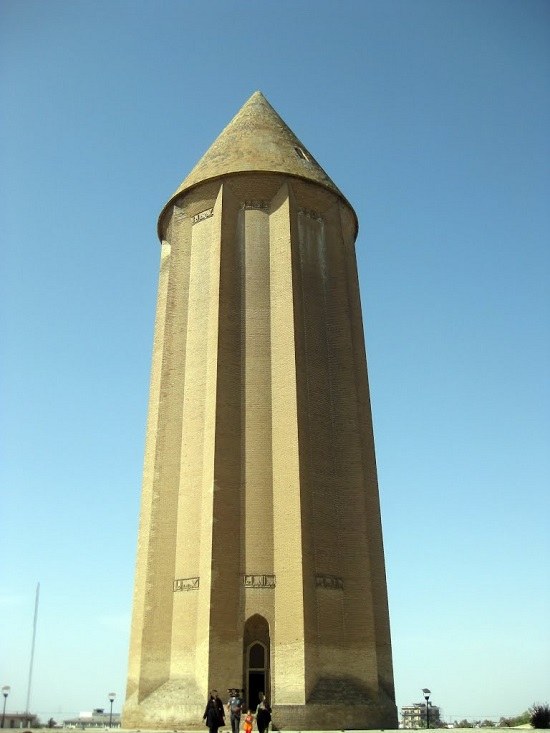
The baked-brick-built tower is the burial place of Qabus ibn Wushmagir, the Sultan of Ziyarid dynasty. In addition, it is also the oldest tomb tower of Razi style and has a height of 60 meters. According to the estimations, the construction of the tower dates back to the 11th century (1006-1007).
The historic tower is located near the National Park of this city on an artificial hill at a height of 15 meters. UNESCO inscribed the dome of Gonbad-e Qabus Tower on the world heritage list in 2013 as an Iranian tangible cultural heritage.
Russian Great Bazaar
This is an old bazaar located at the entrance to the city of Gonbad-e Kavus. The Russian Bazaar is one of the major economic centers of the city. This indoor bazaar has a long tradition, with many shops on both sides.
Imamzadeh Yahya bin Zayd
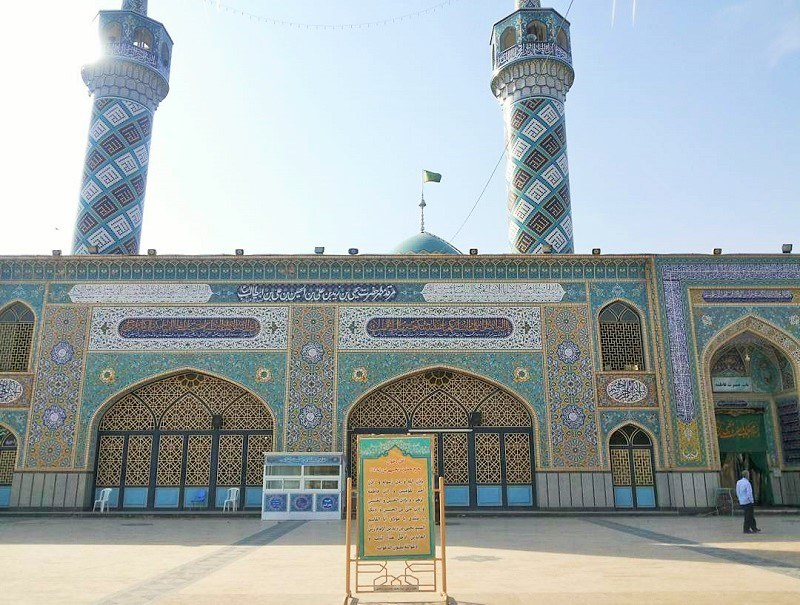
This building is the burial place of the descendant of one of the Shia Imams. The building of Emamzadeh dates back to 738. Iranians renovated and refurbished this building many times. Imamzadeh Yahya ibn Zayd is a famous religious scholar from Golestan Province. Numerous pilgrims and visitors come from different areas every day. Therefore, it is full of pilgrims in most of the time.
Historical Attractions outside the City
Here’s the list of the fabulous sites outside Gonbad-e Kavus:
Shrine of Khalid Nabi
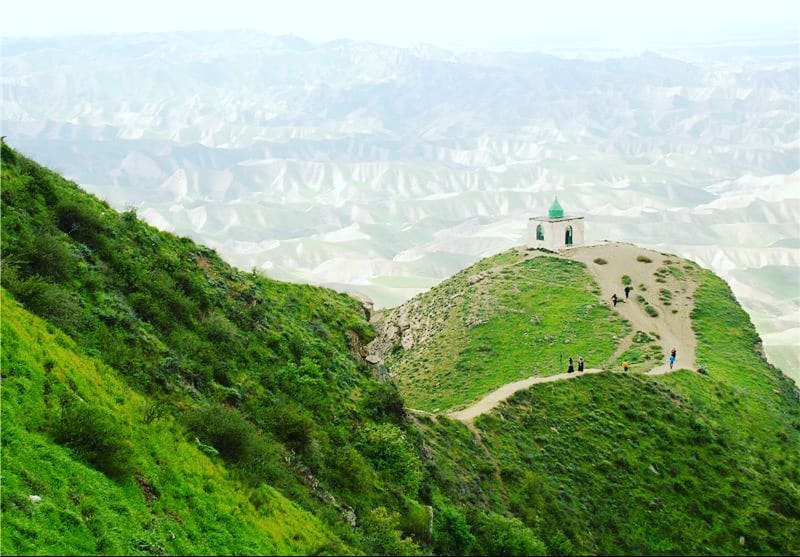
This shrine is the burial place of a saint for Iranian Turkmens, located 90km northeast of Gonbad-e Kavus, in the mountains between Kalaleh and Maraveh Tappeh, on a 700-meter high mountain. Based on the beliefs of the Turkmen people, Khalid Nabi (Khalid bin Sinan) is one of the four Prophets that, at the lapse of the time between Jesus and Muhammad, invited people to the religion of God. He was an Arab.
Natural Attractions of Gonbad-e Kavus
Here’s the list of some beautiful spots in the nature surrounding the city:
Golestan Dam Area
Golestan Dam is located in the northeastern part of Gonbad City and on the Gorgan River. The landscape of this dam is very beautiful. It is one of the Tourist Attractions of Gonbad-e-Kavus.
Alma Gol, Aji Gol, and Ala Gol wetlands
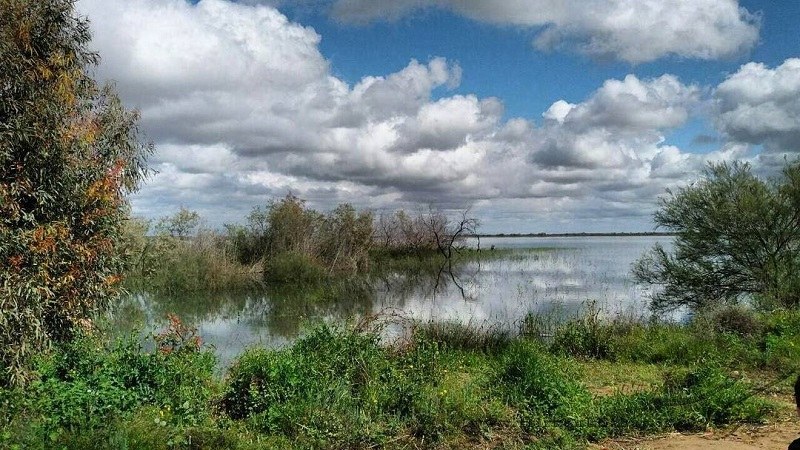
Other natural attractions of Gonbad-e Kavus are Alma Gol, Aji Gol, and Ala Gol wetlands. During the migration season, a variety of birds migrate to this lagoon and create spectacular landscapes. Alma Gol wetland is located in the northern part of Gonbad City, north of Tangeli Village, and is very close to the Iran-Turkmenistan border. This square-shaped lagoon is 207 hectares.
Aji Gol wetland is located in the southern part of Tangeli Village. This wetland with an area of 360 hectares is located between Alma Gol and Ala Gol wetlands.
Ala Gol Wetland is located in the northern part of Gonbad-e Kavus, 60 km away from it. The Green algae cover most of the lagoon bed and common reeds and tamarisks surround it.
Hivehchi-ye Bala Village
This village is located 17 km southwest of Gonbad-e-Kavus and you can see it on the road from the Gonbad to Aq Qala.
Artificial Lake of Gonbad-e Kavus
This lake is located at the entrance to the city of Gonbad-e-Kavus and is an entertainment place of the city. The area of the lake is five hectares. The location of the lake near Shadi Park and the resort in its outskirts have increased the attraction of this recreational site.
Equestrian Complex
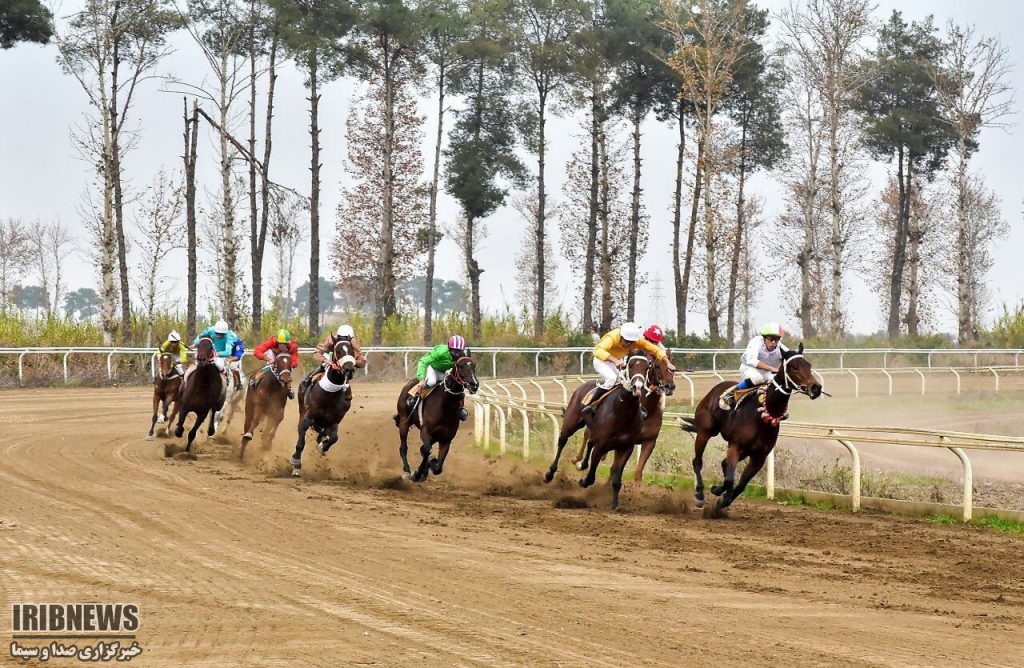
Gonbad-e Kavus Equestrian Complex is a large complex including parking, green space, horse-racing facility, suites, villas, winter and summer stables, tournament field and swimming pools. The complex is located on Moallem Boulevard and in the northeastern part of the city of Gonbad- Kavus. The horse races are held in the spring and autumn, calling the fans from all over the country to the place.
For the international travelers who are seeking for cultural and natural attractions, this is an ideal part of Iran. They can travel to this area, which is close to the Caspian Sea where local people live a nomadic life and the landscape is amazing. The tourist attractions of Gonbad-e Kavus has got a lot to offer to the fans of historical and natural attractions of Iran.






